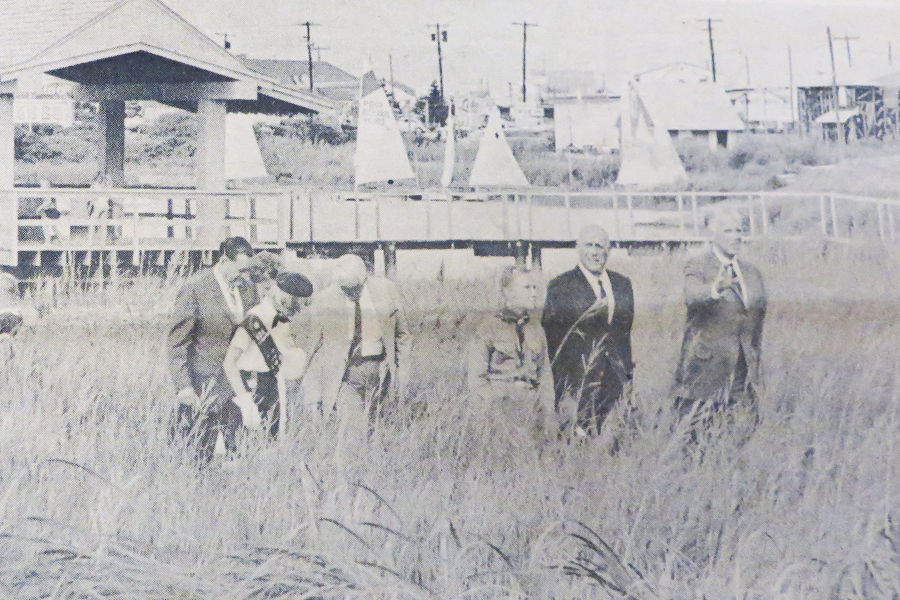A Look Back: Robert Moses and The Montauk Pioneer

The 79-year-old Robert Moses was no longer the mighty lord of all he surveyed when he came out to Montauk to dedicate the pavilion at Kirk Park Beach in the summer of 1968.
Moses, the sometimes admired, sometimes reviled “master builder,” who over the course of an astonishing career, starting in the 1920s, had supervised the construction of such iconic public works as Jones Beach and such questionable projects as the 1964 World’s Fair, was by 1968 no longer the power broker he had been. As the chairman of the Triborough Bridge Authority, Moses had managed to exert his will over New York City mayors and New York State governors, ignoring public outcry to force the construction of the Cross-Bronx Expressway and the Long Island Expressway. But by 1968, Moses’s levers of power had been largely taken from him.
While in Montauk, Moses delivered a speech—Dan Rattiner printed it in the Early August, 1968 issue of The Montauk Pioneer. Moses talked about the land around Montauk that, as head of the Long Island State Park Commission, he had helped to preserve. Moses had known Carl Fisher, and Moses remembered Fisher fondly—although he expresses relief that Fisher’s 1920s plan to turn Montauk into the Miami Beach of the North had not panned out. Moses talked about his profound desire to convince Robert Lion Gardiner, owner of Gardiner’s Island, to bequeath his island to New York State as a nature preserve. This speech makes for some fascinating history.
People say Moses liked cars more than he liked people—this is the man who built the LIE, after all. In his plan for Long Island, Robert Moses seems to have envisioned a collection of curated beaches and parks connected by massive superhighways. Moses didn’t seem to notice the side effects—ugly suburban sprawl, traffic jams—or seem to care how far they spread. In his ideal world, the LIE would have likely extended to Orient!
In fact, in his 1968 Montauk speech, Moses confidently predicted the future construction of a series of four or five suspension bridges across Long Island Sound. He would continue to promote that plan until the day he died. Luckily for us, by 1968, Moses was no longer
in charge.




